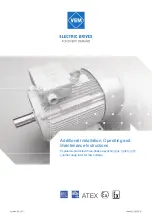
Assembly instructions for kit #5
1
All rights reserved. 2001 Simple Motors, LLC
♦
www.simplemotor.com
♦
Assembly Instructions: Kit #5
1. Insert the T-pin into one of the caps.
2. Insert the rotor core into the same cap as shown below. Apply some pressure to push the
rotor core approximately 1/2" (10-12 mm) into the cap.




























